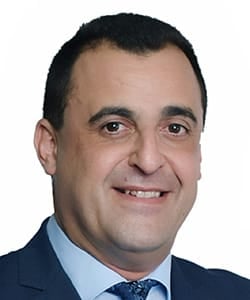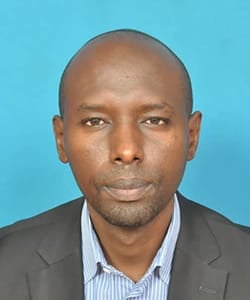How Africa is Revolutionizing Obstetric Anesthesia for Safer Births
Cite as: Epiu I, Nsiri A, Bouarroudj N, et al. How Africa is revolutionizing obstetric anesthesia for safer births. ASRA Pain Medicine News 2025;50. https://doi.org/10.52211/asra110125.005.
A Collaborative Article between ASRA Pain Medicine and African Society of Regional Anesthesia (AFSRA)
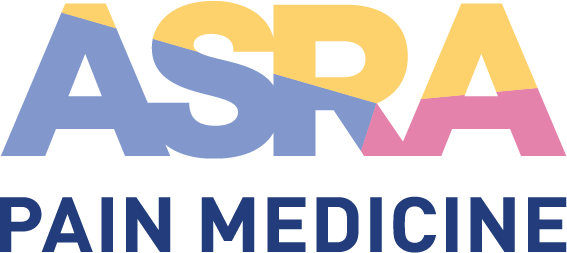
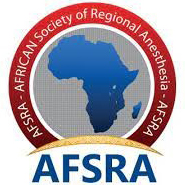
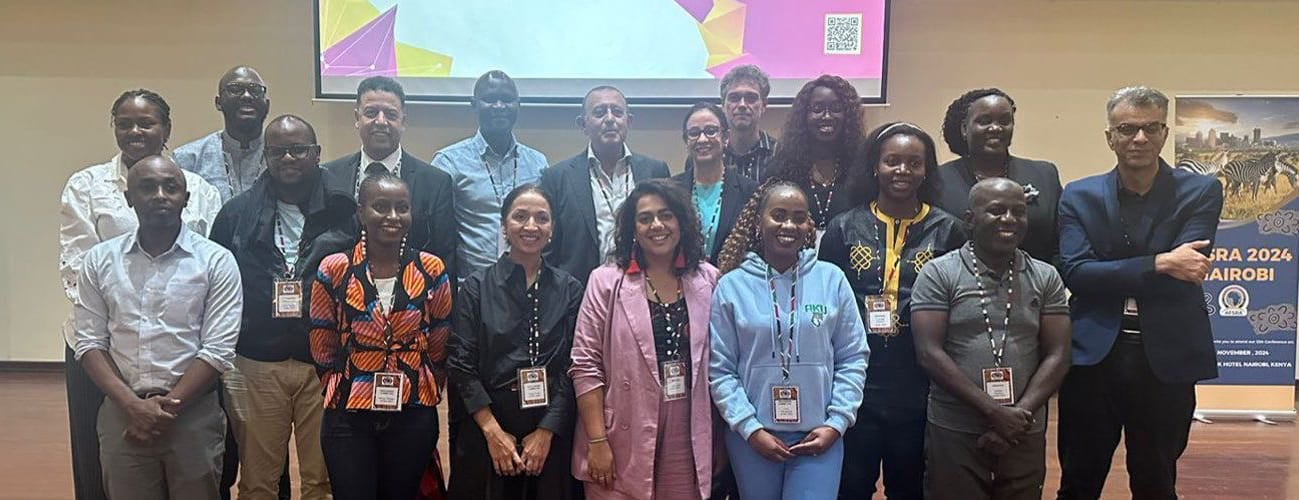
Obstetric anesthesia remains a critical determinant of maternal outcomes across Africa, where disparities in access and quality persist between countries as well as between urban centers and rural regions.1-4 While some countries have made significant improvements through innovative programs and policy reforms, many healthcare systems struggle with fundamental challenges.3-5 The continent presents some advancements and enduring gaps with maternal mortality rates varying widely between nations and even within countries. This article examines the current state of obstetric anesthesia across Africa, highlighting regional variations, successful interventions, persistent barriers, and evidence-based recommendations for improvement. Drawing on recent data and insights from obstetric anesthesiologists across various countries, it offers a comprehensive perspective on how anesthesia care affects maternal safety in diverse African contexts.
Regional Disparities in Practice and Resources
The landscape of obstetric anesthesia varies across Africa's regions, reflecting differences in infrastructure, workforce capacity, and health system organization. In East Africa, countries like Uganda and Kenya demonstrate both progress and persistent challenges in anesthesia.3,4 A recent audit at Aga Khan University Hospital in Nairobi reveals spinal anesthesia as the predominant method for cesarean sections with general anesthesia reserved for specific cases.6 While epidurals for labor are becoming more popular, their use for epidural analgesia remains remarkably low at just 1.5%, constrained by resource limitations and cultural factors despite being considered the gold standard in high-resource settings.6 Postoperative pain management shows more promising trends, with ultrasound-guided transversus abdominis plane (TAP) blocks employed in 80% of cases, effectively reducing opioid requirements.7 In addition, multimodal systemic analgesia is utilized in most patients in the form of NSAIDs and opioids, particularly morphine and pethidine when available. TAP blocks typically use 0.25%–0.5% bupivacaine as the local anesthetic. The opioid-sparing benefits are mostly limited to the first 24 hours postoperatively. Still, when combined with a multimodal regimen, the benefits extend throughout the typical 3-day hospitalization, enhancing safety in settings with minimal monitoring capacity. These techniques, while demonstrating potential, remain unevenly implemented across the region.
North Africa presents a different picture with countries like Morocco benefiting from recent healthcare infrastructure and policy initiatives. Morocco has introduced a universal health insurance program that has significantly improved access to anesthesia services in medium-sized cities; however, rural areas have not benefited as much due to workforce shortages.8-10 The country has made particular progress in private sector investment and telemedicine applications. However, equitable distribution of skilled providers remains a challenge. Libya's situation exemplifies a similar scenario: urban centers benefit from private-sector investments, while rural areas suffer from dependence on short-term locum providers, leading to inconsistent service delivery.11
Central Africa faces significant challenges in its anesthesia workforce. In Cameroon, nurse anesthetists are generally responsible for all clinical anesthetic activities in the district and departmental hospitals. Cameroon has a ratio of 0.75 anesthesia providers per 100,000 population.12 The low number of physician anesthetists leads to reliance on nurse anesthetists for most procedures.12 Here, spinal anesthesia predominates due to scarce resources for epidural analgesia, and rural facilities frequently lack basic monitoring equipment. The most common complication associated with spinal anesthesia is hypotension, likely exacerbated by the prevalent use of isobaric bupivacaine, a more accessible and cost-effective option in the country. However, essential medications, such as phenylephrine and ephedrine, are frequently unavailable, especially in rural areas.
South Africa demonstrates both leadership in improving obstetric anesthesia and in addressing persistent inequalities that prevent universal access to healthcare. Specialist societies like the Obstetric Anesthesia Special Interest Society endeavor to guide practice and define context-sensitive minimum safe care and training standards for the entire workforce.13,14 However, rural facilities in many provinces continue to struggle with equipment shortages and dependence on junior practitioners.15
This urban-rural divide highlights the complex challenges of achieving equitable care across diverse settings in Africa. Mapping of the distribution of physician anesthetists revealed that they are mainly located in the big cities, leaving non-physician providers to practice unsupervised in rural areas.3,4
Workforce Challenges and Training Innovations
The shortage of skilled anesthesia providers represents one of the most significant barriers to safe obstetric care across Africa.3-5,16 Rural areas particularly suffer, especially in countries below the minimum recommended number of four to five physician anesthetists per 100,000 population.17 In such rural areas, the majority of cesarean deliveries are performed without physician anesthetists.18 The workforce crisis stems from multiple factors, including inadequate training capacity, poor retention in rural areas, and international migration of skilled professionals.19,20 Retention challenges are particularly acute due to low remuneration, limited career advancement opportunities, and difficult working conditions, driving providers to urban centers or overseas.
Several innovative training models have emerged to address these workforce gaps. Rwanda has partnered with international organizations like the Canadian Anesthesiologists' Society International Education Foundation to strengthen residency programs through simulation training and standardized curricula.21 The College of Anaesthesiologists of East, Central and Southern Africa (CANECSA) has implemented a unified training curriculum across eight countries with a goal of improving the quality and consistency of anesthesia education in sub-Saharan Africa.22 The CANECSA training curriculum is a 4-year standardized program providing comprehensive training in core anesthesia skills, including obstetric, pediatric, and regional anesthesia.
Task-sharing models have also shown potential in addressing workforce shortages. Non-physician anesthesia providers with limited experience often face complex obstetric cases, highlighting the need for targeted training to better prepare them to deliver essential services in regions lacking specialist care. In Uganda, since 2013, trained non-physician anesthetists now provide safe obstetric anesthesia through programs like the Safer Anaesthesia From Education (SAFE-OBS) course.23 This program has expanded continentally through standardized training across Africa.24 In addition to the brief two-day SAFE-OBS courses, Ugandan medical schools at Busitema University and Kabale University have introduced new curricula offering up to four years of training for non-physician anesthetists.
The shortage of skilled anesthesia providers represents one of the most significant barriers to safe obstetric care across Africa. Rural areas particularly suffer, especially in countries below the minimum recommended number of four to five physician anesthetists per 100,000 population.
Infrastructure and Technological Advancements
Equipment and infrastructure limitations present another significant challenge for safe obstetric anesthesia across much of Africa. Many rural facilities lack basic monitoring equipment, such as pulse oximeters and functioning anesthesia machines. Power reliability also remains a critical issue.5,18 However, technological innovations offer promising solutions to these resource constraints. Portable monitoring devices and handheld ultrasound machines have improved safety in low-resource settings.25 Point-of-care ultrasound training initiatives, such as those led by the African Society of Regional Anaesthesia and Pain Medicine, have equipped hundreds of anesthetists with critical diagnostic and procedural skills.26,27 These technologies, when appropriately adapted to local contexts, can significantly enhance safety despite resource limitations.
Policy Frameworks and Health System Strengthening
Effective policy frameworks have proven crucial in countries that have made significant progress in obstetric anesthesia. The recent National Surgical, Obstetric, and Anesthesia Plans (NSOAPs) in Senegal, Ethiopia, Nigeria, Madagascar, Zambia, Rwanda, Kenya, and Tanzania have provided roadmaps for improving infrastructure, workforce development, and service delivery.5 These comprehensive plans, developed through multi-stakeholder processes, address anesthesia care as part of broader maternal health strategies.
The country's NSOAP success stems from a political commitment to expanding Emergency Obstetric and Newborn Care (EmONC) facilities and to the widespread adoption of standardized tools.5 Tanzania, for example, aims to increase the number of anaesthesia providers from 0.09 per 100,000 to 2.23 per 100,000 in 2025 by training both physicians and nurse anesthetists.5
Rwanda's NSOAP has similarly achieved results through partnerships with international organizations and integration of simulation training into anesthesia education.28,29 Alternative financing mechanisms have also shown promise to overcome financial barriers to care in resource-constrained settings. Cameroon's "Cheque Santé" program, a prepayment system covering all pregnancy-related travel for care, has improved access to services.30
Conclusion
Africa's obstetric anesthesia landscape presents both significant challenges and remarkable opportunities for improvement. While disparities persist between and within countries, success stories from Uganda, Kenya, Tanzania, Rwanda, South Africa, and others demonstrate the potential possibilities with committed leadership, innovative approaches, and context-specific solutions. The path forward requires sustained investment in workforce development, infrastructure, and policy frameworks, always guided by local expertise and adapted for diverse healthcare environments. By building on existing successes and addressing persistent gaps through collaborative, evidence-based strategies, Africa can achieve equitable access to safe obstetric anesthesia and significantly reduce preventable maternal mortality across the continent.
References
- Reed A, Mumba JM, Dyer R. A spotlight on obstetric anesthesia in the developing world: finally getting the attention it deserves. Anesthesia & Analgesia. 2015;120(6):1179-1181. doi:10.1213/ANE.0000000000000722
- van Zundert AAJ. Safety in obstetric anesthesia requires more research and support. Front Anesthesiol 2023;2.
- Epiu I. Challenges of anesthesia in low-and middle-income countries. In: WFSA Newsletter. WFSA; 2014.
- Epiu I, Tindimwebwa JV, Mijumbi C, et al. Challenges of anesthesia in low- and middle-income countries: a cross-sectional survey of access to safe obstetric anesthesia in East Africa. Anesth Analg 2017;124:290-9. https://doi.org/10.1213/ANE.0000000000001690
- Bishop D, van Dyk D, Dyer RA. Safe obstetric anaesthesia in low- and middle-income countries: a perspective from Africa. BJA Educ 2023;23:432-9. https://doi.org/10.1016/j.bjae.2023.07.003
- Obstetric anaesthesia audit report - Aga Khan Hospital (unpublished). In: Aga Khan Hospital, Nairobi; 2024.
- Abdallah FW, Chan VW, Brull R. Transversus abdominis plane block: a systematic review. Reg Anesth Pain Med 2012;37:193-209. https://doi.org/10.1097/AAP.0b013e3182429531
- Harfaoui W, Belyamani L, Zentar A, et al. The new reform of the national health system in Morocco: an opportunity to meet the challenges and improve the practice of anesthesiology.Cureus 2024;16:e57841. https://doi.org/10.7759/cureus.57841
- Mahdaoui M, Kissani N. Morocco's healthcare system: achievements, challenges, and perspectives. Cureus 2023;15:e41143.
- Zahidi K, Moustatraf A, Zahidi A, et al. Universal health coverage in Morocco: the way to reduce inequalities: a cross-sectional study. Open Public Health J 2022;15.
- El-Fallah M. The development of the Libyan health system to improve the quality of the health services: Manchester Metropolitan University, 2014.
- Lokossou T, Zoumenou E, Secka G, et al. Anesthesia in French-speaking Sub-Saharan Africa: an overview. Acta Anaesthesiol Belg 2007;58:197-209.
- Dyer R, Farina Z, Bishop D, et al. The obstetric anaesthesia special interest society: renewed commitment to improving obstetric anaesthesia in South Africa. Southern African Journal of Anaesthesia and Analgesia 2016;22.
- Theron A, Rout CC. Obstetric anaesthesia at district and regional hospitals in KwaZulu-Natal: human resources, caseloads and the experience of doctors. Southern African Journal of Anaesthesia and Analgesia 2014;19:257-62.
- Jonas L. Absenteeism in district rural hospitals in the Eastern Cape: the experiences of nurses: Stellenbosch University; 2022.
- Dohlman LE, Kwikiriza A, Ehie O. Benefits and barriers to increasing regional anesthesia in resource-limited settings. Local Reg Anesth 2020;13:147-58. https://doi.org/10.2147/LRA.S236550
- Davies JI, Vreede E, Onajin-Obembe B, et al. What is the minimum number of specialist anaesthetists needed in low and middle-income countries? BMJ Glob Health 2018;3:e001005. https://doi.org/10.1136/bmjgh-2018-001005
- Epiu I, Wabule A, Kambugu A, et al. Key bottlenecks to the provision of safe obstetric anaesthesia in low-income countries; a cross-sectional survey of 64 hospitals in Uganda. BMC Pregnancy Childbirth 2017;17:387. https://doi.org/10.1186/s12884-017-1566-3
- Dubowitz G, Detlefs S, McQueen KA. Global anesthesia workforce crisis: a preliminary survey revealing shortages contributing to undesirable outcomes and unsafe practices. World J Surg2010;34:438-44. https://doi.org/10.1007/s00268-009-0229-6
- Morriss WW, Enright AC. The anesthesia workforce crisis revisited. Anesth Analg 2023;136:227-9. https://doi.org/10.1213/ANE.0000000000006189
- Twagirumugabe T, Carli F. Rwandan anesthesia residency program: a model of north-south educational partnership. Int Anesthesiol Clin 2010;48:71-8. https://doi.org/10.1097/AIA.0b013e3181dd4f65
- Asingei J, O'Flynn EP, O'Donovan DT, et al. The specialist anesthesiology workforce in East, central, and southern Africa: A cross-sectional study. Anesth Analg 2023;136:230-7. https://doi.org/10.1213/ANE.0000000000006134
- Enright A, Grady K, Evans F. A new approach to teaching obstetric anaesthesia in low-resource areas. J Obstet Gynaecol Can 2015;37:880-4. https://doi.org/10.1016/s1701-2163(16)30021-4
- Association of Anaesthetists of Great Britain and Ireland. Safer anaesthesia from education (SAFE). https://anaesthetists.org/Home/International/Our-international-work/Safer-Anaesthesia-From-Education-SAFE. Accessed August 27, 2025.
- Shaddock L, Smith T. Potential for use of portable ultrasound devices in rural and remote settings in Australia and other developed countries: a systematic review. J Multidiscip Healthc2022;15:605-25. https://doi.org/10.2147/JMDH.S359084
- Kathrada MIS, Jagga M, Mzoneli YN, et al. Perioperative ultrasound among South African anaesthetists: a survey of current practice and availability. Southern African Journal of Anaesthesia and Analgesia 2021;27:271-7.
- Wachira J, Matheka DM, Masheti SA, et al. A training program for obstetrics point-of-care ultrasound to 514 rural healthcare providers in Kenya. BMC Med Educ 2023;23:922. https://doi.org/10.1186/s12909-023-04886-x
- Citron I, Jumbam D, Dahm J, et al. Towards equitable surgical systems: Development and outcomes of a national surgical, obstetric and anaesthesia plan in Tanzania. BMJ Glob Health2019;4:e001282. https://doi.org/10.1136/bmjgh-2018-001282
- Livingston P, Evans F, Nsereko E, et al. Safer obstetric anesthesia through education and mentorship: a model for knowledge translation in Rwanda. Can J Anaesth 2014;61:1028-39. https://doi.org/10.1007/s12630-014-0224-8
- Bita Fouda AA, Rakya I, Awelsa B, et al. Contribution du chèque santé dans l’amélioration de la santé maternelle et néonatale dans la région du nord au Cameroun. Health Sci Dis 2023;24.



